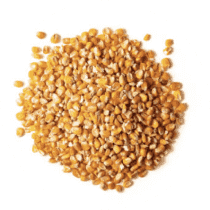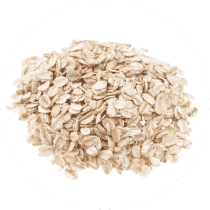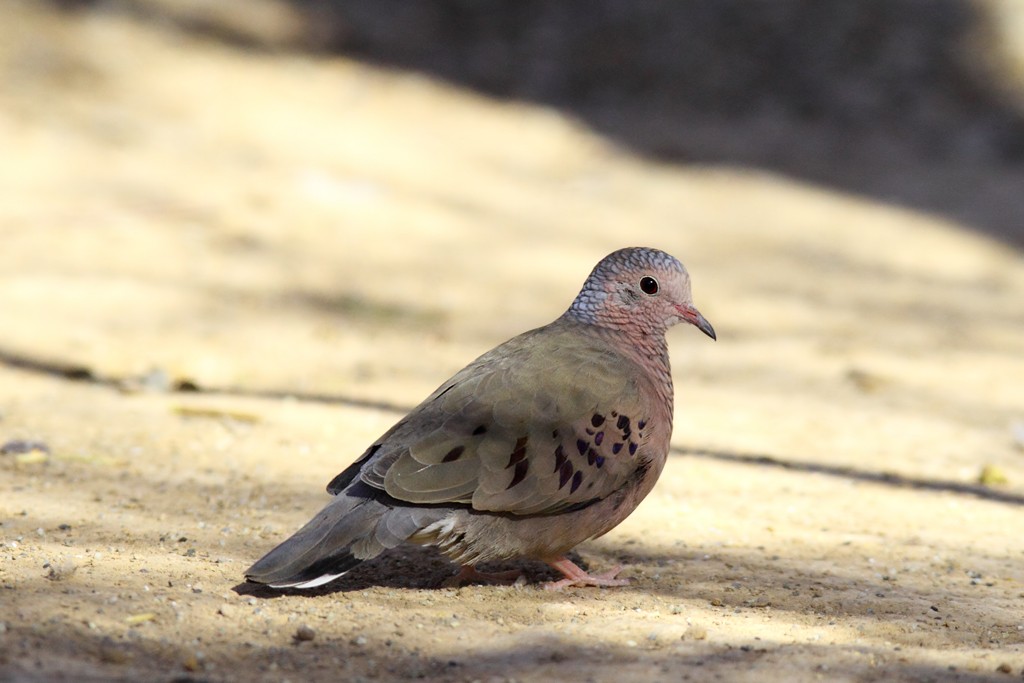Common Ground Dove
A species of Columbina Ground Doves Scientific name : Columbina passerina Genus : Columbina Ground Doves
Common Ground Dove, A species of Columbina Ground Doves
Botanical name: Columbina passerina
Genus: Columbina Ground Doves
Content
Description General Info
Description
The common ground dove is North America's smallest dove and is one of the world's smallest by mass. This species ranges from 15–18 cm (5.9–7.1 in) in length, spans 27 cm (11 in) across the wings and weighs 26–40 g (0.92–1.41 oz). The common ground dove has a yellow beak with a black tip. Feathers surrounding the beak are pink in colour. The feathers on the head and the upper breast have a scale like appearance. The tail feathers are very short and similar colour to the back. The plumage on the back of the bird is brown. The coverts and wing feathers are also brown but have black spotting on them. The common ground dove has chestnut primaries and wing borders, which can only been seen when the bird is flying. The common ground dove shows some sexual dimorphism in their plumage. The males have slate gray feathers on the top of their heads and pink-gray colouration on their belly. Females on the other hand are more gray than their male counterparts and are more evenly coloured. The common ground dove's call can be described as soft whoops that increase in pitch. Often the call is heard in repetition, and is quite distinct. To hear the call of the common ground dove see the external links for a link to a website. 
Size
15-18 cm (6-7 in)
Colors
Brown
Black
Bronze
Gray
Life Expectancy
7.2 years
Nest Placement
Ground
Clutch Size
1 - 3 eggs
Incubation Period
1 - 4 broods
Number of Broods
12 - 14 days
Nestling Period
11 - 14 days
Feeding Habits
Common Ground Dove primarily glean seeds from wild grasses, weeds, and bird feeders. Common Ground Dove's diet varies, with a preference for certain seeds in summer and a more diverse seed intake in winter. They also consume small berries, insects, and snail shells for calcium. Common Ground Dove forage on the ground, are capable of ingesting water by sucking, and can eat while moving.
Habitat
Common Ground Dove are typically found in open or semi-open landscapes with sparse tree and shrub cover. They show a preference for warmer climates at low altitudes, including arid and semi-arid regions like pine woods, coastal dunes, and river bottom woodlands. Vegetation in these areas varies from desert scrub to mesquite flats, oak scrublands, and savannas. Common Ground Dove adapt well to human-altered habitats, such as irrigated farmlands and residential neighborhoods, but they avoid dense forests and wetlands.
Nest Behavior
Common Ground Dove's nesting season varies by region. Both sexes partake in nest construction, which is minimal. After building, the female common Ground Dove typically lays 2 eggs. Both parents incubate the eggs and later care for their young.
Nest Characteristics
Common Ground Dove's nests can be found on the ground or elevated in bushes, branches, fence posts, or cacti. They construct shallow depressions or flimsy structures using grasses, twigs, rootlets, and fibers. Nests measure about 3 inches in diameter and are notably shallow.
Dite type
Granivorous
General Info
Feeding Habits
Bird food type

Hulled Sunflower Seeds

Cracked Corn

Millet

Oats

Milo
Bird Feeder Type

Large Hopper

Platform

Ground
Sounds
Song
Recording location: Mexico
Song
Recording location: Venezuela
Behavior
Common Ground Dove's typical day revolves around ground-based activities such as foraging for seeds and occasionally roosting. Their movement is distinguishable by a characteristic head nodding and a tendency to keep their tails slightly raised. Common Ground Dove displays a preference for low, short flights and usually exhibits calm behavior, even when approached by humans. They form flocks, often mingling with other dove species, and engage in distinct mating rituals involving sharp cooing, wing-raising to display chestnut patches, and following behavior. Pairs, once formed, often last several years, emphasizing common Ground Dove's social fidelity.
Distribution Area
It is found in the southern tip of the United States, most of Mexico, parts of Central America, the Caribbean islands and northernwest South America. The common ground dove does not migrate and is a year-long resident in the areas they are found. The common ground dove lives in open areas that have trees and bushes. They are also found in forests with sandy areas, farmlands, and savannahs and near human infrastructure. Common ground doves seem to hold territories but they are rarely aggressive when dealing with intruders. 
Species Status
Not globally threatened.
Scientific Classification
Phylum
Chordates Class
Birds Order
Pigeons and doves Family
Dove Genus
Columbina Ground Doves Species
Common Ground Dove 